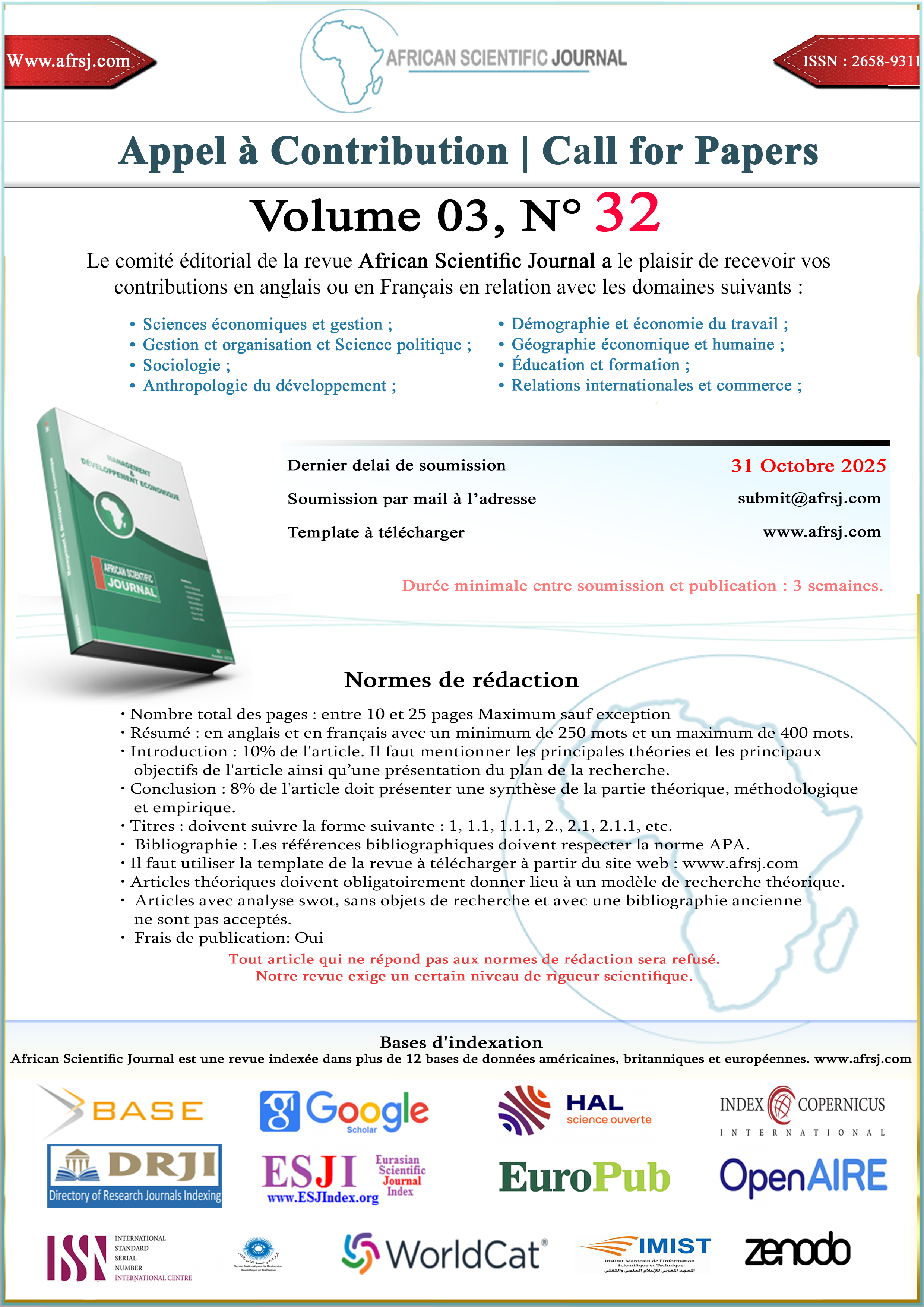Characterization of farms for the integration of agroecological practices for sustainable land management in the North Benin cotton zone
DOI:
https://doi.org/10.5281/zenodo.7638612Keywords:
Characterization, Cotton area of Benin, Farms, Agriculture-Livestock, AgroecologyAbstract
The low understanding of the structure and characterization of Farms makes it difficult to adapt and apply sustainable land management measures. The objective of this article is to characterize cotton farms following the Agriculture-Livestock integration mode to initiate agroecological measures for sustainable farm management. Data are collected during the 2022-2023 cropping season from farm managers through a structured questionnaire built on the Kobotoolbox server and administered to 250 randomly selected cotton farms. The typology of farms is developed by Principal Component Analysis (PCA) and Hierarchical Ascending Classification (HAC), followed by multinomial logistic regression to identify the factors that discriminate membership in each farm type. At the end of the analyses, three categories of cotton farms are distinguished on the basis of variables that reflect the structure and functioning of the farms. These are farms with a low rate of integration of livestock with agriculture and low mechanization (EA type 1: 59.20%), followed by farms with high agricultural mechanization (EA type 2: 19.20%) with a rate of integration of agriculture with livestock that remains very low. The last category of farms is that of intense integration of agriculture with livestock and very low mechanization (EA type 3: 21.60%). Membership in one or another of the farm groups is determined by age, household size, experience in cotton production, and total farm area. Membership in either farm group is determined by age, household size, experience in cotton production and total farm area. It emerges from this work that the orientation of sustainable land management measures must take into account the capacity of farms to integrate agriculture with livestock and their capacity for adapted agricultural mechanization.
Downloads
Published
How to Cite
Issue
Section
License
Copyright (c) 2023 African Scientific Journal

This work is licensed under a Creative Commons Attribution-NonCommercial-NoDerivatives 4.0 International License.





















